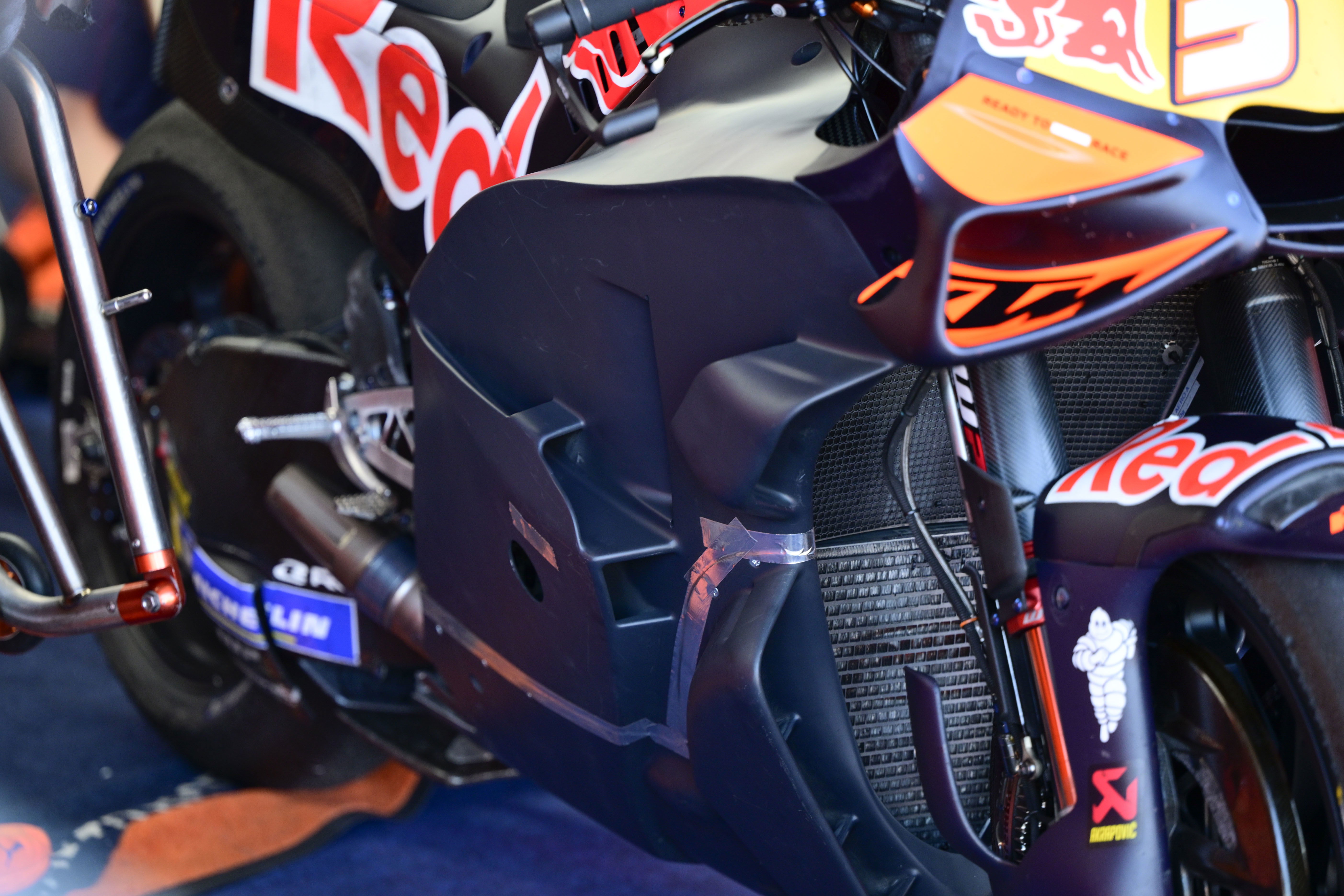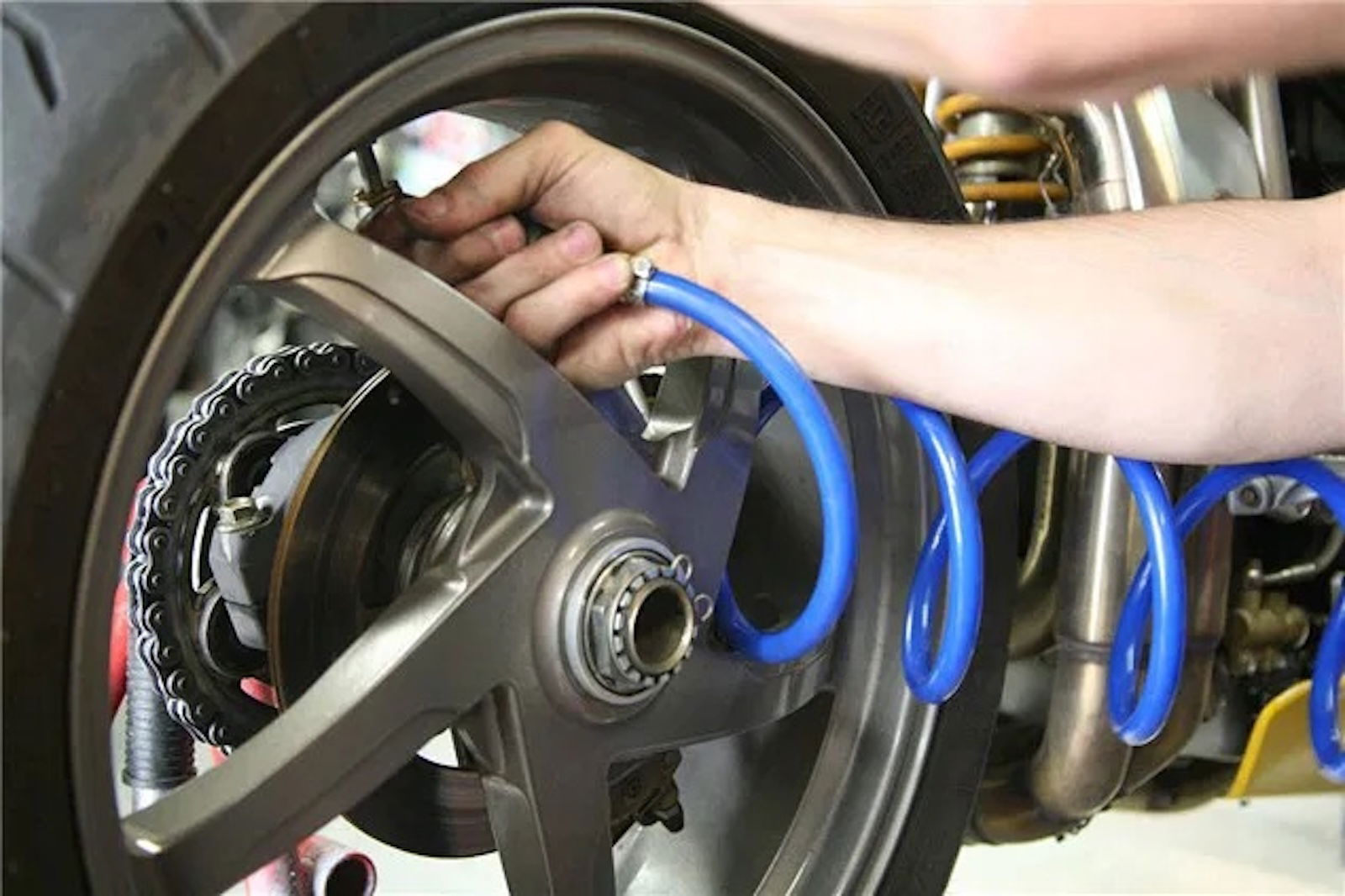Orange County - KTM's hi-tech factory
Think KTM is simply a small Austrian firm that makes off-road bikes? Think again, the boys in orange are setting their sights on European domination


|
I HAD a perception of KTM. I saw it as a small firm that makes very good off-road bikes and a few on-road models. And I'm sure I wouldn't have been alone in this view. For anyone who doesn't know off-road, or indeed has never ventured near a KTM dealer, the only knowledge you would have is of its mud-based reputation. Turns out my preconception was well wide of the mark.
KTM has more road bike dealers in the UK than Harley-Davidson, more than Ducati and even more than BMW. There are actually 36 KTM
dealers in the UK selling its range of road bikes. BMW has 35. Surprised?
I found this out on the recent launch of KTM's new 990 Super Duke, so I dug a bit deeper. KTM currently makes around 85,000 bikes a year, which isn't far off BMW's 101,352 it achieved in 2006.
Although 55,000 of KTM's production are off-road bikes this is a young company that's really on the move. Why? Simple, it's already monopolised the off-road market (45% global share) and is now hungrily chasing a big slice of the on-road segment. Not bad for a company that was officially bust 16 years ago...
Yes, although the firm was founded in 1953 by Mr Kronreif and Mr Trunkenpoltz and based in Mattighofen (hence KTM) it stopped producing bikes (and radiators, mopeds and bicycles) and went into receivership in 1991. But only for a week. During this time Austrian industrialist Stefan Pierer bought and relaunched the brand.
KTM sold off its bicycle and raditor making businesses, concentrated on making off-roaders, and by the end of 1992 it had made 6000 motorbikes. Fast forward 15 years and this number is 85,000 with the target of 100,000 by 2009.
So how's this Austrian firm doing it, what's behind the fortunes of
KTM and what's in its plans for the future? All answers I hoped
to find during my visit as TWO was granted exclusive open door access to KTM's factory.
There is an excited buzz about the KTM factory. Not only do you get the feeling this is a company on the move, you also feel everyone's pulling together to make it happen. The assembly plant workers are all wearing casual clothing - there's no company dress code - but despite this many chose to display some kind of KTM branding be it a baseball cap or an orange shirt. To work at the KTM factory is an aspiration for the locals of Mattighofen, 1280 of whom are employed by the company. Being a welder, assembly worker, pipe bender, whatever, it doesn't matter, you're there. The factory's the main employer in Mattighofen and Stefan Pierer, KTM's owner, is held in very high esteem by the whole country for his business success.
Their work ethic's different to other factories I've visited. The
workers are allowed to chat, breaks aren't frowned upon and smoking while operating heavy machinery doesn't seem to be a problem. It's quite refreshing to see people smiling, laughing and joking while pressing bearings into an engine case or building a spoked wheel.
According to Thomas Kuttruf, KTM's PR manager and our guide for the day, the average age for a KTM employee is just 30 and the only problem they find is getting skilled engineers and designers locally. Despite their obvious enthusiasm the local education system isn't providing these kind of recruits, something KTM is trying to change by sponsoring local students through their University degrees.
Despite working at close to full capacity on its four production lines (KTM estimate 120,000 models a year is its absolute maximum) there are no nightshifts here, workers work 'normal' working hours, and Thomas insists that if any have special needs such as childcare the company is flexible.
It also rewards freethinking. If an employee spots a way to improve production, or just plain old has a smart idea that will benefit the
company they're given a cash reward. If an employee wants to swap departments then there's internal training available and just because you're an assembly plant worker doesn't mean you can't get a job with one of KTM's many race teams, most of which are in-house.
It's this kind of thinking when it comes to manufacturing that, for me, sets KTM aside from other bike manufacturers. There's a certain amount of national and company pride. KTM's are Austrian and as many parts as possible are manufactured in or around the factory.
KTM recognise 'core components'. What this means is they've identified the core parts of a bike they feel are essential to be made in house to ensure they're of the highest quality. These 'core' items are the frame, wheels, engine, exhaust and the actual bike design. There are obviously some items it's simply not worth making yourself like the switchgear, fuel injection, bearings and brakes for example, just because other people do it better. All in all around 85 percent of the bike is either made by KTM or local firms.
Take the wheels for example. In 1992 KTM looked at outsourcing its wheel supplier. Then, after inspecting the quality on offer out there, a decision was made they could build to a similar or even better standard, so they built a wheel assembly area in the factory instead. Today 30 people construct 55,000 pairs of off-road wheels a year. That's a lot of spokes. In addition to this every exhaust pipe is made at the factory, from scratch, with much of the welding done by hand. KTM also make every frame in house just to ensure the quality is to its exacting standards.
Then there's the engine department. Again all the components are made in Austria and delivered to the factory. KTM then machine the parts, build the engines and each one is bench tested for around six minutes to make sure it's working correctly before being put into a bike, where the whole lot is spun up again on a dyno. Running every single engine twice during bike assembly is a time consuming task, but as the motor's a 'core' item the factory's prepared to slow production to make sure it happens and they get the result they're after every time.

|
It's this kind of attention to detail that's changed the image of KTM, especially when it comes to reliability. KTMs of old were not reliable. Kick Twenty Minutes was a regular off-roader joke (a reference to their reluctance to start), which even had a German equivalent Thomas told us, Keina Thousand Meters, which translates to 'not 1000 meters,' a similar comment on their reliability. Since the 1992 takeover KTM has transformed its reputation, build quality and starting ability.
Much of this is due to its R&D and racing departments, and it's no
coincidence they operate from the same building. KTM is passionate about sport and uses the extremes of competition to test ideas and parts for future machines.
The latest model from KTM, the 690 Supermoto, had its engine's robustness tested by using a prototype of it in the 2006 Dakar Rally, probably the most gruelling test of man and machine there is. At the end of 15 hard days, seven KTMs finished in the top ten with works rider Cyril Despres winning the race overall. But off-road is KTM's home. I won't bore you with the facts and figures but most off-road champions, in most categories, are on orange bikes. Success breeds success it seems and now KTM's concentrating its R&D on road bikes.
The number of people working in R&D is a good guide to how fast a manufacturer is developing its model range. More people in R&D means more new models waiting in the wings. In 1999 KTM had 25 people in this department, now it has 200.
As well as off-road and race bikes these men design the forthcoming road bikes, such as the new RC8. KTM has made no secret of the fact it's building the RC8, but it's still over six months from releasing official pictures of the bike. Would you chose to allow a clumsy journalist and a nosey photographer to view the almost finished prototype at this point? The Japanese wouldn't allow you within ten miles. KTM on the other hand opened the door and allowed us to poke around what is probably its most important bike to date with impunity.
Although I'm sworn to secrecy (other manufacturers would be very interested to see what KTM has done) read the interview with the project head, Wolfgang Felber, on the previous page for exclusive insight.
Want to know what else is on the cards? Well, I did see some interesting looking bikes, but a man in a far better position to reveal all is KTM's head of marketing, Heubert Trunkenpolz. His interview on the news pages of this magazine makes very interesting reading.
A day at the KTM factory has changed my whole perception of the brand. You get a real feeling these are people with a passion for their product, a love of two-wheels no matter if they're on or off road, and all in all they're a damn nice bunch. The bikes have a cool mix of Germanic engineering, attention to detail and Italian design flair. A handy result of Austria's position between the two countries perhaps?
KTMs have a character that echoes the love of riding shown by their
people. The company is expanding at such a pace it has already earmarked an area near the factory where it will build a new assembly plant. So there's no reason why it won't hit its predicted targets, and probably better them. The drive and passion is certainly there, hopefully for KTM the market will be too. Having seen and heard about its future products I'm certain it will be.

|
Wolfgang Felber project leader RC8
KTM gave us an exclusive sneak peak at the final, running, prototype of the RC8. The project has almost finished testing and will soon reach its final sign-off, ready for production. Although we can't reveal much about it let's just say it has features that no other sports bike has and is very impressive. Project leader Wolfgang Felber explains the thinking behind the RC8.
"The concentration with the RC8 was to create a concept which makes it possible to have unique balance between the engine and chassis together because we always see the bike as a union. You can have a good engine and a good chassis but it must fit together. You must also take care a lot about the controls, it must be easy to use and ride. My idea is always to have a bike which doesn't make you busy. If some of the controls are heavy or something then you are always fighting the bike. The bike should just do what you are thinking of doing. The bike is working with you. This is the philosophy and why we have concentrated on getting the throttle response and the engine's power right. The engine must have lots of top power but our focus was to have a rideable object because the engine is already rather strong, but it must be forgiving also. Control of the power, a steady torque curve, that is where we put a lot of attention. Which is why it has traditional fuel-injectors, not ride-by-wire. The ride-by-wire throttle is very complex, it will have it sooner or later but at the moment it does not. Throttle connection makes a huge difference. If you do not have a smooth throttle response and it is a hard hit going from no load to part load everything on the bike will be influenced, you can feel it in the suspension and it upsets the handling."
I had a perception of KTM. I saw it as a small firm that makes very good off-road bikes and a few on-road models. And I'm sure I wouldn't have been alone in this view. For anyone who doesn't know off-road, or indeed has never ventured near a KTM dealer, the only knowledge you would have is of its mud-based reputation. Turns out my preconception was well wide of the mark.
KTM has more road bike dealers in the UK than Harley-Davidson, more than Ducati and even more than BMW. There are actually 36 KTM dealers in the UK selling its range of road bikes. BMW has 35. Surprised?
I found this out on the recent launch of KTM's new 990 Super Duke, so I dug a bit deeper. KTM currently makes around 85,000 bikes a year, which isn't far off BMW's 101,352 it achieved in 2006. Although 55,000 of KTM's production are off-road bikes this is a young company that's really on the move. Why? Simple, it's already monopolised the off-road market (45% global share) and is now hungrily chasing a big slice of the on-road segment. Not bad for a company that was officially bust 16 years ago...
Yes, although the firm was founded in 1953 by Mr Kronreif and Mr Trunkenpoltz and based in Mattighofen (hence KTM) it stopped producing bikes (and radiators, mopeds and bicycles) and went into receivership in 1991. But only for a week. During this time Austrian industrialist Stefan Pierer bought and relaunched the brand.
KTM sold off its bicycle and raditor making businesses, concentrated on making off-roaders, and by the end of 1992 it had made 6000 motorbikes. Fast forward 15 years and this number is 85,000 with the target of 100,000 by 2009.
So how's this Austrian firm doing it, what's behind the fortunes of KTM and what's in its plans for the future? All answers I hoped to find during my visit as TWO was granted exclusive open door access to KTM's factory.











